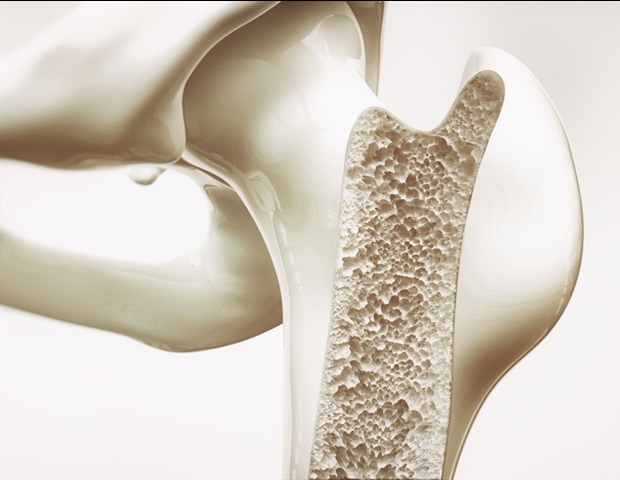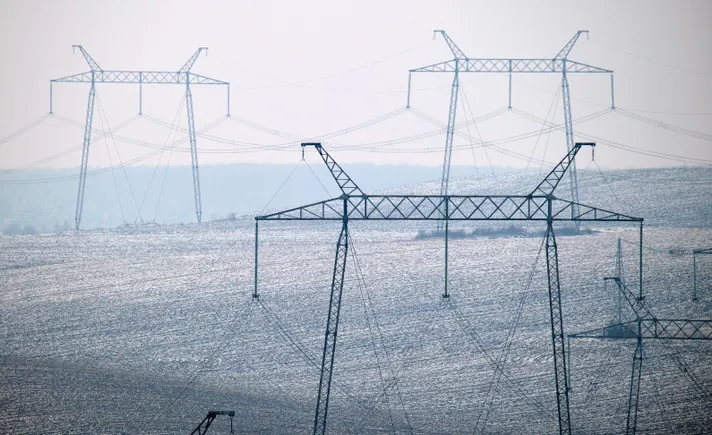- President calls for boosting Pak- Kyrgyz cooperation in diverse sectors RADIO PAKISTAN
- President Asif Ali Zardari in a meeting with Altamash Wazir Khan, Ambassador-designate to Kyrgyz Republic, at Aiwan-e-Sadar. Associated Press of Pakistan
- President meets Pakistan’s ambassador-designate to Kyrgyz Republic ptv.com.pk
- Ambassador-designate to Kyrgyz Republic calls on the President Zardari Islamabad Post
- President meets Ambassador-designate to Kyrgyz Republic Associated Press of Pakistan
Author: admin
-
President calls for boosting Pak- Kyrgyz cooperation in diverse sectors – RADIO PAKISTAN
-

PML-N’s Rana Sanaullah wins Senate by-election for Punjab seat – Pakistan
Adviser to the Prime Minister on Political Affairs Rana Sanaullah Khan won the Senate by-election from Punjab on Tuesday, according to unofficial results.
According to Form-56 of the election results, the government candidate Sanaullah won after getting 250 votes.
The polling was held at the Punjab Assembly. Out of 363 members of the provincial legislature, 251 cast their ballots and one vote was rejected.
Sanaullah and the opposition’s Salma Ejaz, wife of disqualified candidate Ejaz Chaudhry, were in the fray.
However, the opposition PTI had boycotted the by-election for the seat that fell vacant due to the disqualification of party senator Chaudhry.
The government alliance had a majority of 263 voters, while the opposition had the support of 100 voters. The polling process in the Punjab Assembly continued uninterrupted from 9am to 4pm.
Addressing the media after his victory, Sanaullah said, “The PTI did not choose to boycott the democratic process but chose to escape from the elections.
Their boycott of the elections is a lack of confidence in their members.“
He also condemned the attack on Aleema Khan during his interaction with the media.
Punjab Chief Minister Maryam Nawaz and Punjab Information Minister Azma Bokhari were also present in the assembly to vote for Sanaullah.
Earlier in the month, according to PTI’s media wing, the announcement to boycott the by-election was made by the expected candidate Salma Ejaz herself. She made it clear that she will not contest the by-election as she does not want to become part of the ‘fraudulent elections’.
Twelve PTI lawmakers in Punjab had been disqualified by the Election Commission of Pakistan (ECP) following their conviction in the May 9, 2023 cases. The disqualified lawmakers comprise eight National Assembly and four Punjab Assembly legislators. The NA-129, Lahore, fell vacant on the death of MNA and former governor Mian Azhar.
PTI patron-in-chief Imran Khan has barred his party from contesting the by-polls except on NA-129 where Azhar’s son Hammad Azhar is likely to be the party’s candidate.
“We will not field any candidates in the by-elections for the seats of our unjustly disqualified members. These individuals stood firm with PTI despite extreme challenges. Therefore, the party will completely boycott these by-elections,” Mr Khan had said in a recent tweet.
Azma Bokhari claimed the PTI had already fled the by-election arena. “The PTI is unable to find candidates willing to face PML-N in the field,” she added.
Continue Reading
-

Accenture Acquires Identity and Access Management Company IAMConcepts to Expand Cybersecurity Footprint in Canada
Headquartered in Toronto, Canada, with talented employees across the country, IAMConcepts provides end-to-end IAM services, including Identity Governance and Administration, Privileged Access Management and Customer Identity and Access Management. The company serves some of Canada’s largest banks, along with leading insurance companies, higher education and critical infrastructure organizations. Since its founding in 2013, IAMConcepts has completed hundreds of IAM projects for clients.
“As AI accelerates the threat landscape, organizations must rethink their approach to identity security. Yet most identity and access management programs still focus predominantly on human users,” said Paolo Dal Cin, global lead, Accenture Cybersecurity. “By combining IAMConcepts’ technical skills and critical infrastructure knowledge with Accenture’s end-to-end cybersecurity services and expertise, we will help our clients to secure digital identities through a more holistic approach to threat detection.”
According to Accenture’s Research for State of Cybersecurity Resilience 2025 report, two-thirds (67%) of organizations continue to rely on legacy IAM systems, limiting their ability to support modern security, scalability and user experience requirements[1]. This underscores the critical importance of identity security as a foundation for digital trust, innovation and business growth.
“Agentic and generative AI has completely changed the game on both sides of the fight, making strong and robust IAM protections even more critical for business resilience,” said Fahad Kabir, CEO at IAMConcepts. “We are excited to join the Accenture team, expanding our capabilities to help protect clients as they navigate this new arena, where hackers and cyber threats may no longer just be a real person behind a keyboard.”
Kristine Osgoode, Canada lead, Accenture Cybersecurity said: “Cyberattacks can have devastating consequences on Canadian organizations and the country’s economy, safety and national security. As threats continue to grow more complex, strengthening identity security is crucial to a strong digital core and proactive risk management. Together with IAMConcepts, we will continue to partner with our clients as a strategic enabler, bringing a robust team with deep technical proficiency, strong ecosystem partnerships and innovation that drives trust and long-term success.”
The acquisition of IAMConcepts will be the latest in a series of strategic moves by Accenture to expand its cybersecurity capabilities and solutions. Since 2015, Accenture has made 22 acquisitions in the cybersecurity sector including most recently CyberCX, Morphus and MNEMO Mexico.
Recently, IAMConcepts was recognized in the 2024 KuppingerCole North American Leadership Compass report on IAM systems integrators. Additionally, Accenture has been positioned as a Leader in Everest Group’s Identity and Access Management Services Peak Matrix ® assessment, 2023.
The terms of the acquisition were not disclosed.
About Accenture
Accenture is a leading global professional services company that helps the world’s leading businesses, governments and other organizations build their digital core, optimize their operations, accelerate revenue growth and enhance citizen services—creating tangible value at speed and scale. We are a talent- and innovation-led company with approximately 791,000 people serving clients in more than 120 countries. Technology is at the core of change today, and we are one of the world’s leaders in helping drive that change, with strong ecosystem relationships. We combine our strength in technology and leadership in cloud, data and AI with unmatched industry experience, functional expertise and global delivery capability. Our broad range of services, solutions and assets across Strategy & Consulting, Technology, Operations, Industry X and Song, together with our culture of shared success and commitment to creating 360° value, enable us to help our clients reinvent and build trusted, lasting relationships. We measure our success by the 360° value we create for our clients, each other, our shareholders, partners and communities. Visit us at accenture.com.Accenture is a leading provider of integrated cybersecurity services and industry-specific solutions. Delivered at global scale through over 40 Accenture Cybersecurity Centers, we transform cybersecurity into an engine for business growth and differentiation. Our AI-powered assets and 29,000 highly skilled specialists help clients harness cybersecurity to power business, protect people and drive reinvention. Visit us at accenture.com/cybersecurity.
Forward-Looking Statements
Except for the historical information and discussions contained herein, statements in this news release may constitute forward-looking statements within the meaning of the Private Securities Litigation Reform Act of 1995. Words such as “may,” “will,” “should,” “likely,” “anticipates,” “aspires,” “expects,” “intends,” “plans,” “projects,” “believes,” “estimates,” “positioned,” “outlook,” “goal,” “target” and similar expressions are used to identify these forward-looking statements. These statements are not guarantees of future performance nor promises that goals or targets will be met, and involve a number of risks, uncertainties and other factors that are difficult to predict and could cause actual results to differ materially from those expressed or implied. These risks include, without limitation, risks that: the transaction might not achieve the anticipated benefits for Accenture; Accenture’s results of operations have been, and may in the future be, adversely affected by volatile, negative or uncertain economic and geopolitical conditions and the effects of these conditions on the company’s clients’ businesses and levels of business activity; Accenture’s business depends on generating and maintaining client demand for the company’s services and solutions including through the adaptation and expansion of its services and solutions in response to ongoing changes in technology and offerings, and a significant reduction in such demand or an inability to respond to the evolving technological environment could materially affect the company’s results of operations; risks and uncertainties related to the development and use of AI could harm the company’s business, damage its reputation or give rise to legal or regulatory action; if Accenture is unable to match people and their skills with client demand around the world and attract and retain professionals with strong leadership skills, the company’s business, the utilization rate of the company’s professionals and the company’s results of operations may be materially adversely affected; Accenture faces legal, reputational and financial risks from any failure to protect client and/or company data from security incidents or cyberattacks; the markets in which Accenture operates are highly competitive, and Accenture might not be able to compete effectively; Accenture’s ability to attract and retain business and employees may depend on its reputation in the marketplace; if Accenture does not successfully manage and develop its relationships with key ecosystem partners or fails to anticipate and establish new alliances in new technologies, the company’s results of operations could be adversely affected; Accenture’s profitability could materially suffer due to pricing pressure, if the company is unable to remain competitive, if its cost-management strategies are unsuccessful or if it experiences delivery inefficiencies or fail to satisfy certain agreed-upon targets or specific service levels; changes in Accenture’s level of taxes, as well as audits, investigations and tax proceedings, or changes in tax laws or in their interpretation or enforcement, could have a material adverse effect on the company’s effective tax rate, results of operations, cash flows and financial condition; Accenture’s results of operations could be materially adversely affected by fluctuations in foreign currency exchange rates; Accenture’s debt obligations could adversely affect its business and financial condition; changes to accounting standards or in the estimates and assumptions Accenture makes in connection with the preparation of its consolidated financial statements could adversely affect its financial results; as a result of Accenture’s geographically diverse operations and strategy to continue to grow in key markets around the world, the company is more susceptible to certain risks; if Accenture is unable to manage the organizational challenges associated with its size, the company might be unable to achieve its business objectives; Accenture might not be successful at acquiring, investing in or integrating businesses, entering into joint ventures or divesting businesses; Accenture’s business could be materially adversely affected if the company incurs legal liability; Accenture’s work with government clients exposes the company to additional risks inherent in the government contracting environment; Accenture’s global operations expose the company to numerous and sometimes conflicting legal and regulatory requirements; if Accenture is unable to protect or enforce its intellectual property rights or if Accenture’s services or solutions infringe upon the intellectual property rights of others or the company loses its ability to utilize the intellectual property of others, its business could be adversely affected; Accenture may be subject to criticism and negative publicity related to its incorporation in Ireland; as well as the risks, uncertainties and other factors discussed under the “Risk Factors” heading in Accenture plc’s most recent Annual Report on Form 10-K, as updated in Item 1A, “Risk Factors” in its Quarterly Report on Form 10-Q for the second quarter of fiscal 2025, and other documents filed with or furnished to the Securities and Exchange Commission. Statements in this news release speak only as of the date they were made, and Accenture undertakes no duty to update any forward-looking statements made in this news release or to conform such statements to actual results or changes in Accenture’s expectations.[1] Accenture Research for the State of Cybersecurity Resilience 2025 Report. Based on a four-point scale question: We have a custom IAM solution or software that was designed to meet requirements 5 – 15 years ago and is legacy.
# # #
Contacts:
Alison Geib
Accenture
+1 703 947 4404
[email protected]Scott Tabachnick
Accenture, Canada
+1 416 641 3851
[email protected]Marco Amaya
Accenture
+1 703 947 4134
[email protected]Copyright © 2025 Accenture. All rights reserved. Accenture and its logo are registered trademarks of Accenture.
Continue Reading
-

Durable Oppo A6 Pro is official with 7,000mAh battery and new antenna
The Oppo A6 Pro is official, and it’s one tough smartphone. Rated for IP66, IP68, and IP69, it can handle 8,000KPa of hot water pressure, can soak in 1.5 meters of water for half an hour, and can be used with wet or oily hands.
Oppo says that the A6 Pro can resist a drop of 2.5 meters, continuous drops from 1.5 meters, and can even last up to 1,830 times if dropped from half a meter. This rigidity is achieved by a combination of aviation-grade aluminum in the frame and the Crystal Shield glass upfront, which has a drop resistance of 160% over the previous generation.

But it’s not just physical strength – Oppo worked to achieve better signal strength on the A6 Pro by embedding a 36-degree surround antenna into the phone’s frame. Dubbed the Shanhai (yeah, that’s how they spell it) RF Antenna, it increases low-frequency transmission by 200% and improves reception. And on the software front, the phone will switch to the optimal network if it senses lag.

The Oppo A6 Pro uses a 4nm MediaTek Dimensity 7300 SoC with 8GB, 12GB, or 16GB of LPDDR4X RAM. There’s a 7,000mAh battery with 80W charging. Oppo says the battery will be at 80% strength after 1,830 charging cycles, can charge at -20℃, and can keep fast charging going in between 0℃ and 43℃.

There’s only one meaningful camera on the back – a 50MP f/1.8 wide-angle. Paired with it is a 2MP depth sensor. Upfront is a 16MP f/2.4 selfie.
The screen is a 6.57-inch 2372x1080px 120Hz OLED with 1,400 nits of peak brightness.


The Oppo A6 Pro comes in Gold, Blue, and Black Jade and in four configurations – 8/256GB, priced at CNY 1,799 (€215, INR 22,250); the 12/256GB is CNY 1,999 (€240, INR 24,700); the 16/256GB is CNY 2,199 (€262, INR 27,200); finally, the 16/512GB unit is CNY 2,499 (€300, INR 31,000). The phone is up for pre-order and will begin shipping on September 12.
Source
Continue Reading
-

Fatty acids circulating in the blood predict bone mineral density from childhood to adolescence
A recent study by the University of Eastern Finland is the first to report that the fatty acid composition of blood and the enzyme activity associated with it predict the development of bone mineral density from childhood to adolescence. The results of the Physical Activity and Nutrition in Children (PANIC) study were published in the prestigious Journal of Bone and Mineral Research.
The study included 480 children who were followed over eight years. Of the fatty acids in the blood, a higher proportion of dihomo-gamma-linolenic acid, nervonic acid and arachidonic acid were linked to higher bone density during the follow-up period. Higher activity in enzymes regulating fatty acid metabolism, such as delta-6 desaturase, was also linked to higher bone density. On the contrary, a higher proportion of linolic acid was associated with lower bone density.
Fatty acids affect bone health in complex ways
Different fatty acids can have either beneficial or harmful effects on bone health. Measuring fatty acids in blood circulation provides more detailed information on the fatty acids available in the body than an estimate based on food records, for example.
The recently published study found that several fatty acids circulating in the blood predicted bone mineral density over eight years from childhood to adolescence. Fatty acids are grouped into saturated, monounsaturated and polyunsaturated fatty acids, but the examination of fatty acids by group alone is not sufficient when assessing their association with bone mineral density. Individual fatty acids within the same group may have different effects. In addition, the muscle and fat mass of the body explain these associations to some extent.
This is the first study to demonstrate that the fatty acid composition of the blood in childhood can predict the development of bone density into adolescence. Our results indicate that fatty acid metabolism is an important factor in the healthy development of bones.”
Professor Timo Lakka, Director of the PANIC study
“Interestingly, not all fatty acids within the same group are associated with bone health in the same way – some appear to be positively associated with bone development, while others are linked to less optimal outcomes,” says Sonja Soininen, Associate Professor responsible for the bone health section of the PANIC study. “This reflects the complexity of metabolism and its significance for bone development.”
The results give more insight into how fatty acid metabolism is related to bone development in childhood and can open up new perspectives on the role of nutrition in promoting bone health.
PANIC study examines the health and well-being of children and young people
The study was carried out at the University of Eastern Finland as part of the Physical Activity and Nutrition in Children (PANIC) study of the Institute of Biomedicine. This sub-study included 480 children – 227 girls and 253 boys – who were followed over eight years. Fatty acids were measured from the plasma phospholipids of blood samples using gas chromatography. Bone density and body composition were determined with a DXA device.
PANIC is a long-term lifestyle intervention and follow-up study launched in 2007. More than 500 children in Kuopio who started first grade in 2007-2009 participated in the initial measurements. The follow-up measurements were carried out in 2009-2011 and 2016-2017. The currently ongoing 16-year follow-up measurements among young adults will continue until the end of 2026.
Source:
University of Eastern Finland (UEF Viestintä)
Journal reference:
Lakka, T. A., et al. (2025). Plasma fatty acid composition predicts bone mineral accrual from childhood to adolescence: the PANIC study. Journal of Bone and Mineral Research. doi.org/10.1093/jbmr/zjaf104
Continue Reading
-

Emma Heming Willis on Her ‘Unexpected Journey’
But, in hindsight, that wasn’t the Bruce I knew. Especially when it came to connecting with his daughters. Bruce was a family man at heart. Early on in our relationship and before we had children together, he wanted to spend as much time with his older girls as possible. If we were traveling, he was always dying to get back to them, calling the feeling a “gravitational pull,” which always brought him back to his girls. This was something I loved about him. Today, I understand that him checking out at the table was likely due to cognitive overload — difficulty processing conversations, which is common in primary progressive aphasia (PPA), the variant of FTD that Bruce has. It was an early symptom of his disease.
Many families spend years living with a lot of confusion around symptoms prior to a diagnosis. From speaking to other care partners, I have learned how subtle (or not so subtle) symptoms of certain forms of dementia like FTD or Lewy body, for example, can rock a whole family system and destroy it. (This is not always the case with other dementias like Alzheimer’s, where symptoms like memory issues are more obvious. Each form of dementia is different, which is why it’s important that all types of dementia are not lumped together.)
For FTD in particular, in those early years, no one suspects the diagnosis because most people have no clue what FTD is. So, they assume their person is being rude, apathetic, withdrawn, depressed, irritable, impulsive, reckless or lacking empathy—an array of behaviors that seem like personal choices rather than symptoms of a disease. This major shift in behavior, language, and/or personality is frustrating, confusing, and can ruin relationships. FTD is not your doctor’s first or second thought either. Often FTD is misdiagnosed as a midlife crisis, depression, or bipolar disorder, to name just a few, because the symptoms can apply to all those conditions.
Bruce Miller, M.D., the leading expert in FTD, professor of neurology at the University of California, San Francisco, and head of the Global Brain Health Institute, explains: “Many of the symptoms are very elusive, and they are different for each neurodegenerative disease. So, while it may be easier to recognize that a memory problem is Alzheimer’s, it’s trickier to understand that a change in language or personality is FTD or another form of dementia. Most of us think about the brain as important for memory and language. But the brain is also responsible for our social interactions — how we relate to others and how we nurture and empathize with them.”
Most of us don’t know this or anything else about FTD, and all you see and experience is that something is incredibly different with your loved one. Also, if you’re like I was, you may feel strange bringing these things to the attention of your partner’s doctor—especially if that doctor is not your doctor, too. Initially, I was uneasy going over Bruce’s head in that way. Something about the morality of it didn’t sit well with me. If you feel that way, too, consider the advice of Yolande Pijnenburg, a professor of young-onset dementia at Alzheimer Center Amsterdam at the Amsterdam University Medical Center in the Netherlands: “If your feeling gets stronger that this change in behavior is something that person can’t help, you have to trust that feeling because you’re actually acting to benefit your partner.”
Video: Bruce Willis’ Wife on Life After His Dementia Diagnosis
Subtle changes due to dementia can go on for years, and all that time your person looks fine on the outside. Even more bewildering is that there might never be a moment when he or she expresses concern that something is wrong to you or to a doctor. There’s actually a medical term for this: anosognosia. The National Institutes of Health (NIH) defines anosognosia as a “neurological condition in which the patient is unaware of their neurological deficit or psychiatric condition.” So, if your person isn’t raising his or her hand for help, it’s easy to think that maybe everything is okay. This makes those early stages confusing, and it’s FTD and other early-onset dementias that doctors can easily overlook again and again.
Continue Reading
-

Smarter data for a smarter grid: AI-powered LiDAR is transforming utility infrastructure
James Conlin is a director of product for Sharper Shape.
As power grids grow older and climate threats intensify, electric utilities face urgent pressure to modernize. Meeting today’s expectations for resilience, safety, and efficiency depends not just on upgrading physical infrastructure, but on having the right data — accurate, timely, and scalable insights into assets across vast and varied terrain.
One technology is rapidly changing how utilities manage their infrastructure: LiDAR (Light Detection and Ranging).
LiDAR captures millions to billions of precise, high-resolution 3D data points — forming what’s known as a point cloud. These point clouds create detailed digital models of utility networks and their surrounding environments, mapping everything from power lines and substations to terrain and vegetation. This level of visibility is critical for planning, maintenance, risk mitigation, and emergency response.
But collecting LiDAR data is only the beginning. The real value comes from turning that data into something useful. That’s where classification comes in.
Raw LiDAR point clouds are essentially unstructured spatial data. Each point marks a location in space but offers no context on its own. Is it part of a wire, a tree, or the ground? Without classification, there’s no way to know. Classification assigns meaning to these points by labeling them according to what they represent, transforming raw data into actionable information.
For electric utilities, this process is essential. It enables vegetation management by identifying growth that’s encroaching on power lines before it becomes a hazard. It supports asset inspection by helping monitor conditions such as wire sag, pole tilt, or equipment degradation. It ensures compliance and safety by verifying that infrastructure meets required regulatory clearances. It aids in disaster modeling by identifying potential risk zones for wildfires, floods, or storms. And it guides system upgrades by informing the design of new infrastructure or the expansion of existing networks.
In short, without classification, even the highest-resolution LiDAR data remains unusable. Real insight only emerges when this cloud of points is organized, labeled, and understood.
Traditional methods are no longer enough
Historically, classification has relied on rule-based systems, statistical models, and manual workflows. Analysts would apply filters, segmentation tools, and human judgment to distinguish between features.
While this approach can work in limited contexts — such as small, flat, or sparsely populated areas — it breaks down at scale. Today’s LiDAR datasets can cover hundreds of square miles and include billions of points. Manually classifying that volume of data is not only labor-intensive; it’s cost prohibitive. Even semi-automated approaches often require extensive review and corrections, especially in complex terrain.
Utilities are hitting the ceiling of what traditional classification methods can deliver. Enter artificial intelligence.
Artificial intelligence, particularly deep learning, has fundamentally transformed how LiDAR data is interpreted. Unlike traditional rule-based systems, AI models learn from examples, recognizing patterns across massive datasets and automatically classifying points with remarkable accuracy.
One of the key strengths of deep learning is its ability to distinguish between similar shapes, such as differentiating wires from nearby branches. It can also detect small or partially obscured infrastructure components that might be missed by manual methods. These models adapt to a wide range of environments without requiring significant reprogramming, making them flexible across diverse terrain and utility networks. Most importantly, they scale effortlessly — processing massive datasets in hours rather than weeks.
For utilities, the impact is significant: faster analysis, greater precision, and more reliable insights with less dependence on human intervention.
Selecting the right tools
Not all LiDAR classification tools are created equal. Some rely heavily on automation and AI, while others still depend on manual or semi-automated workflows. Choosing the right solution depends on project needs: the scale of the data, the complexity of the landscape, and the required level of accuracy.
AI-based tools offer the advantage of speed and scalability. Many can automatically classify key elements — such as ground, vegetation, wires, and poles — across extensive datasets. More advanced tools include feature extraction capabilities that allow utilities to dig deeper, modeling clearances, detecting anomalies, or assessing degradation over time.
That said, fully automated tools aren’t perfect. Complex or cluttered environments can trip up even the best algorithms. For this reason, hybrid workflows, where AI handles the bulk of the work and human experts step in for fine-tuning, remain the most effective approach in many cases.
Other critical features to look for include robust QA/QC tools to flag inconsistencies, visualization tools for reviewing classification in 3D, and seamless integration with existing GIS and asset management systems.
Despite its promise, AI-based classification isn’t without hurdles. One of the biggest is the need for training data: lots of it, accurately labeled. Creating high-quality datasets specific to utility infrastructure is time-consuming and expensive.
Another limitation is generalizability. A model trained in an urban setting might perform poorly in a forested or mountainous region. Retraining models for different geographies often require specialized expertise.
Additionally, some features, such as rare infrastructure types or unusual damage conditions, still require manual identification or custom software solutions. While general-purpose AI tools are becoming more accessible, utility-specific challenges still demand tailored approaches.
And yet, progress continues. Modern workflows now include automated point cloud alignment and registration, significantly reducing setup time. AI models can be updated dynamically as new data is collected, avoiding the need to reprocess entire datasets. Many tools also include built-in QA/QC that automatically flag outliers or inconsistencies for review.
The result: cleaner, faster, and more reliable classification — with fewer bottlenecks.
Looking ahead: What’s next for AI+LiDAR in utilities
The future of utility-grade LiDAR is tightly linked to advances in AI. As models become more sophisticated and tools more intuitive, classification will shift from a manual task to a seamless part of the data pipeline.
Emerging capabilities are already on the horizon. Predictive modeling, for example, will use historical LiDAR data to forecast vegetation growth, detect early signs of infrastructure fatigue, or assess changing fire risk. Real-time classification, powered by edge processing on drones or mobile devices, will enable utilities to make faster field decisions without waiting for central processing.
Equally important, LiDAR data is increasingly being integrated with broader asset systems: GIS platforms, inspection tools, and maintenance databases, creating a unified view of infrastructure that supports proactive management.
As costs drop and tools mature, these capabilities won’t be limited to the largest utilities. Smaller co-ops, municipal providers, and regional operators will gain access to the same tools, leveling the playing field and accelerating grid modernization across the board.
AI-powered LiDAR classification is no longer a high-tech novelty — it’s rapidly becoming a critical component of modern utility operations. Faced with aging infrastructure, increasing environmental threats, and tightening budgets, utilities need smarter tools to manage assets and mitigate risk.
With scalable, intelligent classification, utilities can move beyond reactive maintenance and into predictive, data-driven decision-making. The benefits are clear: improved reliability, faster emergency response, safer operations, and lower overall costs.
This isn’t just a better way to analyze data — it’s a smarter way to build and operate the grid.
Continue Reading
-

US Open champ Sabalenka makes a cameo on ‘The Tonight Show’
It was Aryna Sabalenka day in New York City — and everywhere else, for that matter — on Monday, less than 48 hours removed from her second consecutive US Open title.
In the morning, the World No. 1 appeared on The Today Show alongside fellow US Open champion and World No. 1 Carlos Alcaraz. Hours later, she again appeared alongside Alcaraz — this time a fake one, played by comedian and actor Fred Armisen — on The Tonight Show Starring Jimmy Fallon.
After Armisen comedically gave a lackluster account of his win over Jannik Sinner, and explained that he really doesn’t remember the match, or even being there, the host said, “I love having you here, and I’m so happy you took the time, but I actually wish I could hear from a US Open winner who does remember the—”
Before Fallon could finish his sentence, Sabalenka emerged from behind the curtain, trophy in hand, to a booming applause from the crowd.
“It was amazing,” the four-time Grand Slam champion told the Tonight Show crowd. “I love playing in New York, and the experience was unforgettable.”
With the win over American Amanda Anisimova in the final, Sabalenka became the first woman to repeat as US Open champion since Serena Williams in 2014. It was also her first Grand Slam title of the year after getting upset in the Wimbledon semis by Anisimova and falling short in two finals, first to Madison Keys in Melbourne and then Coco Gauff in Paris.
This time around, the 27-year-old focused on managing her emotions, staying within herself and trusting her game.
“Going into this final, I decided for myself that I’m going to control my emotions,” Sabalenka told reporters after the match. “I’m not going to let them take control over me, and [it] doesn’t matter what happens in the match. … My mindset was just going out there, fight for every point.
“Doesn’t matter the situation. Just focus on myself and focus on things that I have to do to win the match. I think from what I understand today, that the lesson learned — and I really hope it will never happen again if I’m going to be playing another finals — that I will be more in control.”
Sabalenka is next scheduled to play in Beijing, at the China Open, later this month.
Continue Reading
-

Changing indoor environments could improve sleep for people living with dementia
Implementing changes to indoor environments, such as cooler bedrooms at night and increasing the amount of bright light during the day, could significantly improve sleep for people living with dementia, according to a study led by the University of Surrey.
The study, published in the journal Sleep, analyzed more than 26 thousand days and nights of data collected by zero-burden technologies, such as under-the-mattress bed sensors, contactless monitoring of bed occupancy and environmental sensors. Researchers found that bedroom temperature and daytime indoor light are associated with objectively measured sleep.
The study found that seasonal changes in the outdoor temperature and light environment were reflected in changes in the indoor environment, with associated changes in sleep timing, duration and heart rate patterns. Even accounting for seasonal changes, on nights that bedrooms were hotter than usual, people living with dementia had more disrupted sleep and higher breathing rates, while on days on which light indoors was brighter than usual, people had longer, less fragmented sleep and lower breathing rates.
Sleep difficulties are commonly reported in dementia, with restless nights, long daytime naps and a disrupted body clock often undermining quality of life, with more memory problems following nights of broken sleep. Improving sleep by optimising bedroom temperature and daytime light may therefore have also beneficial effects on common symptoms in dementia.
We have analyzed millions of hours of data, which has allowed us to see how temperature and light patterns inside the home can impact sleep for people living with dementia. Unlike short-term studies or carer reports, our approach captures long-term patterns in real homes, offering new insights into sleep disruption and how sleep disruption could be reduced.”
Professor Anne Skeldon, Head of the School of Mathematics at the University of Surrey and co-author of the study
These zero-burden technologies do not need to be worn or recharged, significantly enhancing their capability to collect data over long periods of time. This enables measurement of sleep characteristics, aspects of breathing and heart rate and indoor light and temperature across seasons and years without any burden to participants.
Working in collaboration with Imperial College London, Surrey and Borders Partnership NHS Foundation Trust, and funded by the UK Dementia Research Institute, through the Care Research & Technology Centre, researchers assessed 26,523 days of data from 70 people living with dementia who were living in their own homes to build a detailed picture of how the environment affects sleep. Data were collected in line with the Care Research & Technology ambition to use zero-burden sensors placed under mattresses and throughout homes, to provide clinical guidance which will help people remain in their own homes for longer.
Surrey’s study found that some homes were uniformly hot, day and night, summer and winter. Suggesting that during the winter, turning down the thermostat at night could improve sleep, which may also save on energy costs.
The study also found that the effects of temperature and light varied widely between individuals, suggesting that some people are far more sensitive to seasonal and environmental changes than others. Notably, the team found that sleep timing in people with dementia tended to follow the clock rather than natural sunrise and sunset.
With climate change making hot nights more frequent, ensuring cooler bedrooms and brighter indoor light could become an increasingly important way to improve the daily lives of this vulnerable group, who often spend most of their time indoors.
This study demonstrates the power of longitudinal and simultaneous monitoring of the indoor environment, sleep and physiology. We often forget the importance of the indoor environment for health, even though we spend most of our 24-hour day inside. Novel digital health technologies now enable the monitoring of the impact of the indoor environment on physiology and behaviour without any burden to the participants. The further development of ‘zero burden technologies’ holds great promise for monitoring health and preventing ill-health in the community.’
Professor Derk-Jan Dijk, Director of the Surrey Sleep Research Centre and co-author of the study
Source:
Journal reference:
Skeldon, A. C., et al. (2025). Seasonal and daily variation in indoor light and temperature associate with sleep disturbance in dementia. SLEEP. doi.org/10.1093/sleep/zsaf125
Continue Reading
-

Glymphatic System in Adolescents with Major Depressive Disorder: No Dy
Introduction
Major Depressive Disorder (MDD) is a severe mental health condition, typically characterized by persistent negative affect, pervasive cognitive distortions, and behavioral impairments, accompanied by somatic symptoms such as fatigue, weight loss, and appetite suppression.1,2 MDD significantly elevates the risk of self-harm and even suicide, and is currently one of the leading causes of disability worldwide.3 It is projected to become the leading contributor to global disease burden by 2030.4 Adolescence is a critical period characterized by significant changes in brain structure and function, particularly in systems involved in emotional regulation, cognitive control, and social behavior. Research indicates that the reorganization of neural circuits during this stage makes adolescents more susceptible to stress and negative emotions, which in turn increases the risk of developing depression.5 However, most studies examining the biological mechanisms underlying the onset of depression have primarily focused on adult populations, with far fewer studies targeting adolescents.6 Furthermore, many pharmacological treatments proven effective in adults show limited efficacy in the adolescent population,7 suggesting potential differences in the underlying pathophysiological mechanisms between these age groups. Therefore, it is crucial to thoroughly investigate the unique pathogenic mechanisms of adolescent MDD and develop tailored therapeutic interventions to address this pressing issue.
The glymphatic system is a specialized channel network within the brain parenchyma, primarily responsible for facilitating the clearance of harmful substances such as β-amyloid.8–10 However, research on the human glymphatic system has been limited due to the invasive nature of imaging techniques.11 To overcome this, a novel method called Diffusion Tensor Imaging analysis along the Perivascular Space (DTI-ALPS) was introduced in 2017. This non-invasive method assesses water diffusion within perivascular spaces to provide an index that reflects glymphatic function. With its non-invasive nature and ease of use, the DTI-ALPS method has significantly advanced the study of human brain lymphatic system function.12–14
As research into the glymphatic system has progressed, an increasing body of evidence suggests a relationship between this system and MDD. Previous studies have demonstrated a significant reduction in DTI-ALPS index in adults with MDD, indicating a marked decline in glymphatic system function in these individuals.15,16 Furthermore, research by Yao17 revealed that adult depression models in mice exhibited glymphatic dysfunction, which could be ameliorated by improving sleep quality through melatonin treatment, leading to a restoration of glymphatic system function and a significant reduction in depressive behaviors. These findings suggest that a decline in glymphatic system function is closely associated with MDD in adults, and that this dysfunction is particularly linked to poor sleep quality. Modulating glymphatic system function could therefore emerge as a promising therapeutic target for future treatments of MDD.
Despite progress in understanding the relationship between the glymphatic system and adult MDD, the changes in glymphatic system function in adolescent MDD remain unclear. This study seeks to bridge this gap by utilizing the DTI-ALPS index to investigate changes in the glymphatic system in adolescents with MDD and explore the relationship between these changes and sleep quality. The goal is to uncover the patterns of glymphatic system dysfunction in adolescent MDD and analyze its relationship with sleep quality, thereby laying the groundwork for future research on the pathophysiology and personalized treatment strategies for adolescent MDD.
Materials and Methods
Participants
This study was approved by the Ethics Committee of The Third Hospital of Mianyang (2022–18). A total of 80 first-episode and medication-naive patients with MDD from outpatient visits at our institution and included in the MDD group. In parallel, age- and gender-matched healthy controls were recruited via poster advertisements from the same socio-demographic background, and structured clinical interviews (non-patient version) were used to screen the health status of the control participants, ultimately selecting 58 individuals for the HC group. All participants and their parents/legal guardians voluntarily enrolled in the study and provided written informed consent. This declaration of Helsinki was followed in the study.
Inclusion Criteria for the MDD Group
- Diagnosis of MDD according to the criteria outlined in the Diagnostic and Statistical Manual of Mental Disorders (Fifth Edition);
- Age between 12 and 18 years;
- A Hamilton Depression Rating Scale (HAMD) score of ≥8;
- No pharmacological treatment for at least 14 days prior to MRI scanning.
Exclusion Criteria for the MDD Group
- Diagnosis of any other psychiatric disorders (eg, bipolar disorder, attention-deficit/hyperactivity disorder, autism spectrum disorder, eating disorders) or a family history of psychiatric disorders;
- History of pharmacological treatment or any form of psychotherapy;
- Substance use or abuse;
- Any significant neurological or systemic medical conditions (eg, epilepsy, traumatic brain injury);
- Age outside the 12–18 years range;
- Contraindications to MRI scanning.
The MDD group was further subdivided according to HAMD scores into the following categories: mild MDD (HAMD score: 8–17), moderate MDD (HAMD score: 18–24), and severe MDD (HAMD score ≥25).
Inclusion Criteria for the HC Group
- Age between 12 and 18 years;
- No history of any psychiatric disorders or medical conditions;
- HAMD score <8;
- No pharmacological treatment for at least 14 days prior to MRI scanning.
Exclusion Criteria for the HC Group
- Age outside the 12–18 years range;
- Any history of psychiatric disorders or family history of psychiatric conditions;
- Significant neurological or systemic medical conditions;
- Substance use or dependency;
- Any contraindications to MRI scanning.
Collection of Clinical Data and Sleep Quality Assessment
Demographic variables of all participants, including age, gender, handedness, and educational level (measured in years of education), were recorded within one week before and after MRI scanning. Sleep quality was assessed using the Pittsburgh Sleep Quality Index (PSQI),18 which evaluates various dimensions of sleep, including subjective sleep quality, sleep latency, sleep duration, habitual sleep efficiency, sleep disturbances, use of sleep medications, daytime dysfunction, and other factors affecting sleep. PSQI scores were categorized as follows: ≤5 indicates good sleep quality, 6–10 indicates mild sleep disturbances, 11–15 indicates moderate sleep disturbances, and 16–21 indicates severe sleep disturbances.
MRI Image Acquisition
MRI data were acquired using a 3.0T MRI scanner (Skyra, Siemens) with an 8-channel head coil at our institution. The imaging modalities included 3D-T1 weighted images, T2 weighted images, and Diffusion Tensor Imaging (DTI). The scanning parameters are as follows:
3D-T1: Repetition time = 2.25 ms, Echo time = 1900 ms, Slice thickness = 1 mm, Field of view = 256×256 cm², Voxel size = 1.0 × 1.0×1.0 mm, Bandwidth = 200 Hz.
DTI: Repetition time = 9200 ms, Echo time = 95 ms, Slice thickness = 2 mm, Field of view = 256×256 cm², Number of directions = 64, Voxel size = 2.0 × 2.0×2.0 mm, Bandwidth =1630Hz/pixel.
DTI-ALPS Index Acquisition
Data Preprocessing and Tensor Fitting
The preprocessing of the DTI data was carried out using Quantitative Susceptibility Imaging Preprocessing (version 0.13.1), which facilitated the correction of head motion and eddy current distortions, while also employing B0 field map correction to rectify magnetic field inhomogeneities. The DTI data were subjected to tensor fitting using the DTI fitting command from FSL, yielding a four-dimensional image file (DTI_tensor.nii.gz) containing six volumes and their corresponding Fractional Anisotropy map. Within the analysis pipeline of this study, diffusion coefficient mappings along the x-axis (right-left, ), y-axis (anterior–posterior;
 ), and z-axis (inferior-superior;
), and z-axis (inferior-superior; ) can be accurately extracted based on this correspondence. The processed diffusion-weighted images were then linearly registered to the individual subject’s T1-weighted anatomical space using the FMRIB’s Linear Image Registration Tool from FMRIB Software Library (FSL, version 6.0.5), thus providing an anatomical reference for subsequent region of interest (ROI) delineation.
) can be accurately extracted based on this correspondence. The processed diffusion-weighted images were then linearly registered to the individual subject’s T1-weighted anatomical space using the FMRIB’s Linear Image Registration Tool from FMRIB Software Library (FSL, version 6.0.5), thus providing an anatomical reference for subsequent region of interest (ROI) delineation.DTI-ALPS Index Calculation
In accordance with prior literature,11 ROIs were manually delineated in the white matter near the prominent projections and association fibers adjacent to the lateral ventricles. Using the FA image, which was registered to the T1 anatomical space, ROIs for the projection fibers and association fibers were drawn separately on the left and right hemispheres, each ROI having a circular diameter of 5 mm, totaling four ROIs. These ROIs were meticulously positioned on the same plane and aligned horizontally, with efforts made to avoid the ventricular cavities and vascular lumens.
The DTI-ALPS index, as shown in the equation below, is defined as the ratio of the average x-axis diffusivity in the projection area (
 ) and the association area (
) and the association area ( ) to the average y-axis diffusivity in the projection area (
) to the average y-axis diffusivity in the projection area ( ) and the z-axis diffusivity in the association area (
) and the z-axis diffusivity in the association area ( ):
):

A detailed flowchart of this process is shown in Figure 1.

Figure 1 Flowchart of the DTI-Alps data acquisition, preprocessing, and DTI-ALPS index calculation process.
Statistical Analysis
All statistical analyses were conducted using SPSS 24.0 software. For categorical data, comparisons were performed using the Chi-square test. For quantitative data, normality was first assessed using the Shapiro–Wilk test. If data from all four groups followed a normal distribution, they were expressed as mean ± standard deviation (SD), and one-way analysis of variance (ANOVA) was used for group comparisons. When ANOVA results were significant, Bonferroni post-hoc multiple comparisons were conducted for pairwise comparisons. If the data deviated from normality, they were presented as median and interquartile range (IQR), and the Kruskal–Wallis H-test was employed for group comparisons. If the Kruskal–Wallis H-test showed significant differences, Dunn’s Multiple Comparison Test was applied for pairwise comparisons. To compare differences between the healthy control (HC) group and the MDD group, independent t-tests or Mann–Whitney U-tests were used, depending on the data distribution. Group comparisons between the HC group and the three MDD sub-groups (mild, moderate, and severe) were then performed using the same statistical methods. Partial correlation analysis was conducted to explore the relationship between sleep scores and DTI-ALPS indices, adjusting for age, gender, and HAMD score as covariates. Correlation values closer to 1 or −1 indicated a stronger linear relationship, while values closer to 0 suggested a weaker linear relationship. A P-value of less than 0.05 was considered statistically significant.
Results
Demographic Data Analysis
The MDD group included 80 participants (18 males, 62 females). The mild MDD group included 9 participants (4 males, 5 females). The moderate MDD group included 28 participants (7 males, 21 females). The severe MDD group included 43 participants (7 males, 36 females). The healthy control (HC) group included 58 participants (21 males, 37 females). No significant differences were found between the HC group and the MDD group, nor between the HC group and any MDD sub-group (mild, moderate, or severe), in terms of age, gender distribution, education level, or handedness (Table 1).

Table 1 Comparison of Demographic Characteristics Between Mild, Moderate, and Severe MDD Groups and HC Group
Comparison of DTI-ALPS Index Results
Shapiro–Wilk testing confirmed that the DTI-ALPS indices for all five groups followed a normal distribution.
In the MDD, mild MDD, moderate MDD, severe MDD, and HC groups, the left hemisphere DTI-ALPS indices were 1.60 ± 0.18,1.70 ± 0.20, 1.58 ± 0.18, 1.59 ± 0.17, and 1.63 ± 0.21, respectively. The right hemisphere DTI-ALPS indices were 1.64 ± 0.19,1.74 ± 0.21, 1.64 ± 0.12, 1.62 ± 0.21, and 1.63 ± 0.19, respectively. The whole-brain DTI-ALPS indices were 1.62 ± 0.16,1.72 ± 0.18, 1.61 ± 0.12, 1.61 ± 0.17, and 1.63 ± 0.18, respectively. No significant differences were observed between the HC group and the MDD group (Figure 2A–C), nor between the HC group and the mild, moderate, or severe MDD sub-groups, in terms of the DTI-ALPS indices for the left hemisphere, right hemisphere, and whole brain (Figure 3A–C).

Figure 2 Comparison of DTI-Alps index results and PQSI scores between MDD and HC groups. (A–C) No significant differences for the left hemisphere DTI-ALPS index, right hemisphere DTI-ALPS index, and whole-brain DTI-ALPS index between MDD and HC groups. (D) HC group demonstrated significantly lower PQSI scores compared to MDD group. ****p < 0.0001.
Abbreviations: LH DTI-ALPS index, left hemisphere DTI-ALPS index; RH DTI-ALPS index, right hemisphere DTI-ALPS index; WB DTI-ALPS index, whole-brain DTI-ALPS index.

Figure 3 Comparison of DTI-Alps index results and PQSI scores between mild MDD, moderate MDD, severe MDD, and HC groups. (A–C) No significant differences for the left hemisphere DTI-ALPS index, right hemisphere DTI-ALPS index, and whole-brain DTI-ALPS index between mild MDD, moderate MDD, severe MDD, and HC groups. (D) HC group demonstrated significantly lower PQSI scores compared to mild MDD, moderate MDD, severe MDD groups, respectively. No significant differences in PQSI scores between mild MDD, moderate MDD, and severe MDD groups. ****p < 0.0001.
Abbreviations: LH DTI-ALPS index, left hemisphere DTI-ALPS index; RH DTI-ALPS index, right hemisphere DTI-ALPS index; WB DTI-ALPS index, whole-brain DTI-ALPS index.
Comparison of PQSI Scores
Shapiro–Wilk testing revealed that the PQSI scores in the HC group did not follow a normal distribution, whereas the PQSI scores in the MDD group and three sub-groups adhered to a normal distribution. The PQSI scores for the MDD, mild MDD, moderate MDD, severe MDD, and HC groups were 12.53 ± 3.65, 11.22 ± 4.55, 12.43 ± 3.71, 12.86 ± 3.43, and 5 (3, 6), respectively. The results of the Kruskal–Wallis H-test showed significant differences in PQSI scores between the HC group and the MDD group, as well as between the HC group and the three MDD sub-groups (p < 0.0001). Subsequent Dunn’s multiple comparisons revealed no significant differences in PQSI scores between the MDD, mild MDD, moderate MDD, and severe MDD groups. However, the HC group showed significantly lower PQSI scores compared to the MDD group and its three sub-groups, with statistically significant differences observed between the HC group and all other groups (HC vs MDD, p < 0.0001; HC vs mild MDD, p < 0.0001; HC vs moderate MDD, p < 0.0001; HC vs severe MDD, p < 0.0001) (Figures 2D and 3D).
Correlation Analysis Between DTI-ALPS Indices and PQSI Scores
There was no significant correlation between PQSI scores and the DTI-ALPS indices of the left hemisphere, right hemisphere, or whole brain in the MDD group after controlling for the effects of age, gender and HAMD (p>0.05, Figure 4).

Figure 4 Correlation analysis between DTI-Alps indices and PQSI scores. No significant correlation between PQSI scores and the left hemisphere DTI-ALPS index, right hemisphere DTI-ALPS index, and whole-brain DTI-ALPS index in MDD group.
Abbreviations: LH DTI-ALPS index, left hemisphere DTI-ALPS index; RH DTI-ALPS index, right hemisphere DTI-ALPS index; WB DTI-ALPS index, whole-brain DTI-ALPS index.
Discussion
The results of this study indicate that, compared to the normal sleep quality of age-matched healthy controls, adolescents with MDD exhibit poor sleep quality, while no notable differences were observed in the function of the glymphatic system. These findings suggest that the glymphatic system may not be implicated in the pathogenesis of adolescent MDD, which differs from its potential role in adult MDD. This distinction offers important insights into the divergent pathological mechanisms between adolescent and adult MDD, providing a basis for more tailored and age-specific therapeutic strategies in the future.
Previous research has demonstrated that the function of the glymphatic system varies significantly across different age groups. Compared to both young and elderly mice, juvenile mice exhibit a more efficient clearance rate of the brain’s glymphatic system.19 A recent multicenter study by Dai20 collected and analyzed brain DTI-ALPS indices from a healthy population aged 20 to 87 years. The results revealed that the average DTI-ALPS index for the young group (20–39 years) ranged from 1.58 to 1.62, for the middle-aged group (40–59 years) it ranged from 1.32 to 1.52, and for the elderly group (60–87 years), the DTI-ALPS index ranged from 1.32 to 1.48. These findings suggest that the DTI-ALPS index in the younger population is significantly higher compared to the middle-aged and elderly groups. Research by Yang16 indicated that the average whole-brain DTI-ALPS index in healthy adults (with a median age of 55 years) was 1.57, while in adults with MDD (with a median age of 53 years), the DTI-ALPS index decreased to 1.45. Our findings show that the average whole-brain DTI-ALPS index for both adolescent healthy individuals and those with MDD is approximately between 1.6 and 1.7, suggesting that the function of the glymphatic system in both adolescent healthy and depressed populations remains within normal functional parameters.
The PQSI scores indicated that adolescent patients with MDD exhibit sleep disturbances, which is consistent with findings in adult MDD research.21 Sleep disorders are a significant factor in the onset and progression of various psychiatric disorders, including MDD.22 The relationship between sleep disturbances and MDD is multifaceted and reciprocal,23 with sleep disorders not only serving as a symptom of MDD but also potentially exacerbating depressive symptoms.24 Moreover, sleep status is one of the primary factors influencing the function of the glymphatic system. Glymphatic system activity is inhibited during wakefulness and significantly enhanced during sleep.10 Research has demonstrated that during sleep or general anesthesia, the spatial structure of the glymphatic system expands, and its clearance efficiency increases several-fold compared to the wakeful state.25
Despite our findings showing that adolescents with MDD experience a poor sleep quality, there was no significant alteration in the function of the glymphatic system, and no clear correlation was observed between these two factors. This result contrasts with the glymphatic system dysfunction typically seen in adults with MDD. This discrepancy may be attributed to the unique physiological and metabolic mechanisms inherent to adolescents. Research has shown that the distribution of aquaporin-4 (AQP-4) in the adolescent brain is more optimized compared to that in adults, with AQP-4 playing a pivotal role in cerebrospinal fluid circulation and the clearance of metabolic waste.26 This enhanced distribution of AQP-4 may enable adolescents to maintain efficient waste clearance even in the face of reduced sleep quality. Furthermore, adolescents exhibit more pronounced arterial pulsatility compared to adults, a physiological feature that facilitates fluctuations in cerebral blood flow,27 thereby promoting the movement of cerebrospinal fluid. This, in turn, augments the glymphatic system’s capacity to eliminate waste. Such mechanisms may allow adolescents to preserve normal glymphatic function despite experiencing poor sleep quality. On the other hand, the sleep architecture in adolescent depression diverges notably from that of adults. Studies28 have revealed that adolescents with depression display distinct sleep spindle activity and cyclic alternating patterns, contrasting with the increased rapid eye movement (REM) sleep and shortened REM latency typically observed in adult depression. These differential patterns of sleep disturbances may exert disparate effects on the glymphatic system, potentially contributing to the maintenance of a normally functioning glymphatic system in adolescents with depression.
While adolescents with MDD maintain normal glymphatic function, adults exhibit impaired glymphatic function. This age-related difference provides novel insights into the pathophysiological mechanisms underlying MDD. Previous studies have established a strong association between MDD and neuroinflammation.29,30 As a vital conduit for the clearance of neurotoxic substances from the brain,10 glymphatic system dysfunction may lead to the accumulation of inflammatory mediators,31 thereby potentiating the pathophysiology of MDD. In adolescent MDD patients, the glymphatic system appears to maintain its functional integrity, enabling efficient clearance of inflammatory cytokines and thereby mitigating the neuroinflammatory response and alleviating clinical symptoms. Therefore, the treatment of adult MDD may require a heightened focus on restoring the function of the lymphatic system to eliminate neurotoxic substances, alleviate neuroinflammation, and facilitate the brain’s natural repair processes. In contrast, in adolescent MDD patients, neuroinflammation may not be linked to glymphatic system, thereby necessitating the exploration of alternative treatment approaches grounded in different biological mechanisms.
This study has several limitations. Chief among them is the absence of longitudinal data, which hinders the ability to assess long-term outcomes and establish causal relationships. Moreover, the relatively small sample size in the mild MDD group (only 9 patients) may compromise statistical power, increase the likelihood of random error and thereby limit the robustness of the findings. The study is also susceptible to selection bias, as participants were drawn from a single institution, which may not accurately reflect the broader population. Additionally, the single-center design restricts the external validity of the results, as they may not be generalizable to other clinical settings. Future research should aim to address these limitations by employing larger sample sizes, multicenter collaborations, and longitudinal follow-up to validate the findings, minimize biases, and enhance the generalizability of the conclusions.
Nevertheless, the findings suggest that, in contrast to adults, glymphatic system dysfunction does not significantly manifest in adolescent MDD patients. This discrepancy may stem from age-related differences in glymphatic system functionality, as well as distinct variations in sleep patterns between adolescent and adult MDD patients. Further investigation is warranted to clarify the underlying mechanisms that allow the glymphatic system to remain functional in adolescents with MDD. The divergent glymphatic system function between adolescent and adult MDD patients is critical for the development of age-tailored therapeutic strategies for MDD.
Data Sharing Statement
The data supporting the results of this study are available upon request from the corresponding author.
Author Contributions
Ruohan Feng: Conceptualization, Writing – Original Draft, Writing – Review & Editing. Jie Zhang: Investigation (Subject Recruitment), Data Curation (MRI Scanning), Formal Analysis (Data Analysis), Writing – Original Draft. Xingxiong Zou: Investigation (Subject Recruitment), Data Curation (MRI Scanning), Formal Analysis (Data Analysis), Writing – Original Draft. Xianjie Cai: Writing – Review & Editing, Formal Analysis (Data Analysis). Menghong Zou: Writing – Review & Editing, Formal Analysis (Data Analysis). Hongwei Li: Writing – Review & Editing, Formal Analysis (Data Analysis). Jie Zhang and Xingxiong Zou contributed equally to this work.
All authors agreed on the journal to which the article will be submitted; reviewed and agreed on all versions of the article before submission, during revision, the final version accepted for publication, and any significant changes introduced at the proofing stage; and agree to take responsibility and be accountable for the contents of the article.
Funding
This work was supported by the Sichuan medical youth innovation research project(Q22052), Foundation of Sichuan Research Center of Applied Psychology of Chengdu Medical College (CSXL-23411), Opening Project of Functional and Molecular Imaging Key Laboratory of Sichuan Province (SCU-HM-2024001).
Disclosure
The authors declare that they have no financial interests that could be perceived as a conflict of interest.
References
1. Otte C, Gold SM, Penninx BW, et al. Major depressive disorder. Nat Rev Dis Primers. 2016;2:16065. doi:10.1038/nrdp.2016.65
2. Cui L, Li S, Wang S, et al. Major depressive disorder: hypothesis, mechanism, prevention and treatment. Signal Transduct Target Ther. 2024;9:30. doi:10.1038/s41392-024-01738-y
3. Santomauro DF, Mantilla Herrera AM, Shadid J. Global prevalence and burden of depressive and anxiety disorders in 204 countries and territories in 2020 due to the COVID-19 pandemic. Lancet. 2021;398:1700–1712. doi:10.1016/S0140-6736(21)02143-7
4. Malhi GS, Mann JJ. Depression. Lancet. 2018;392:2299–2312. doi:10.1016/S0140-6736(18)31948-2
5. Weir JM, Zakama A, Rao U. Developmental risk I: depression and the developing brain. Child Adolesc Psychiatr Clin N Am. 2012;21(2):237–59,vii. doi:10.1016/j.chc.2012.01.004
6. Zonca V, Marizzoni M, Saleri S, et al. Inflammation and immune system pathways as biological signatures of adolescent depression-the IDEA-Risco study. Transl Psychiatry. 2024;14:230. doi:10.1038/s41398-024-02959-z
7. Bylund DB, Reed AL. Childhood and adolescent depression: why do children and adults respond differently to antidepressant drugs? Neurochem Int. 2007;51:246–253. doi:10.1016/j.neuint.2007.06.025
8. Iliff JJ, Wang M, Liao Y, et al. A paravascular pathway facilitates CSF flow through the brain parenchyma and the clearance of interstitial solutes, including amyloid β. Sci Transl Med. 2012;4:147ra111. doi:10.1126/scitranslmed.3003748
9. Hablitz LM, Nedergaard M. The glymphatic system: a novel component of fundamental neurobiology. J Neurosci. 2021;41:7698–7711. doi:10.1523/JNEUROSCI.0619-21.2021
10. Jessen NA, Munk ASF, Lundgaard I, Nedergaard M. The glymphatic system: a beginner’s guide. Neurochem Res. 2015;40:2583–2599. doi:10.1007/s11064-015-1581-6
11. Taoka T, Ito R, Nakamichi R, Nakane T, Kawai H, Naganawa S. Diffusion tensor image analysis along the perivascular space (DTI-Alps): revisiting the meaning and significance of the method. Magn Reson Med Sci. 2024;23:268–290. doi:10.2463/mrms.rev.2023-0175
12. Taoka T, Masutani Y, Kawai H, et al. Evaluation of glymphatic system activity with the diffusion MR technique: diffusion tensor image analysis along the perivascular space (DTI-Alps) in Alzheimer’s disease cases. Jpn J Radiol. 2017;35:172–178. doi:10.1007/s11604-017-0617-z
13. Qin Y, Li X, Qiao Y, et al. DTI-Alps: an MR biomarker for motor dysfunction in patients with subacute ischemic stroke. Front Neurosci. 2023;17:1132393. doi:10.3389/fnins.2023.1132393
14. Lee HJ, Lee DA, Shin KJ, Park KM. Glymphatic system dysfunction in obstructive sleep apnea evidenced by DTI-Alps. Sleep Med. 2022;89:176–181. doi:10.1016/j.sleep.2021.12.013
15. Bao W, Jiang P, Xu P, et al. Lower DTI-Alps index in patients with major depressive disorder: correlation with fatigue. Behav Brain Res. 2025;478:115323. doi:10.1016/j.bbr.2024.115323
16. Yang C, Tian S, Du W, et al. Glymphatic function assessment with diffusion tensor imaging along the perivascular space in patients with major depressive disorder and its relation to cerebral white-matter alteration. Quant Imaging Med Surg. 2024;14:6397–6412. doi:10.21037/qims-24-510
17. Yao D, Li R, Hao J, et al. Melatonin alleviates depression-like behaviors and cognitive dysfunction in mice by regulating the circadian rhythm of AQP4 polarization. Transl Psychiatry. 2023;13:310. doi:10.1038/s41398-023-02614-z
18. Mollayeva T, Thurairajah P, Burton K, Mollayeva S, Shapiro CM, Colantonio A. The Pittsburgh Sleep Quality Index as a screening tool for sleep dysfunction in clinical and non-clinical samples: a systematic review and meta-analysis. Sleep Med Rev. 2016;25:52–73. doi:10.1016/j.smrv.2015.01.009
19. Kress BT, Iliff JJ, Xia M, et al. Impairment of paravascular clearance pathways in the aging brain. Ann Neurol. 2014;76:845–861. doi:10.1002/ana.24271
20. Dai Z, Yang Z, Chen X, et al. The aging of glymphatic system in human brain and its correlation with brain charts and neuropsychological functioning. Cereb Cortex. 2023;33:7896–7903. doi:10.1093/cercor/bhad086
21. Buysse DJ, Angst J, Gamma A, Ajdacic V, Eich D, Rössler W. Prevalence, course, and comorbidity of insomnia and depression in young adults. Sleep. 2008;31:473–480. doi:10.1093/sleep/31.4.473
22. Sun X, Liu B, Liu S, et al. Sleep disturbance and psychiatric disorders: a bidirectional Mendelian randomisation study. Epidemiol Psychiatr Sci. 2022;31:e26. doi:10.1017/S2045796021000810
23. Pandi-Perumal SR, Monti JM, Burman D, et al. Clarifying the role of sleep in depression: a narrative review. Psychiatry Res. 2020;291:113239. doi:10.1016/j.psychres.2020.113239
24. Pandi-Perumal SR, Moscovitch A, Srinivasan V, Spence DW, Cardinali DP, Brown GM. Bidirectional communication between sleep and circadian rhythms and its implications for depression: lessons from agomelatine. Prog Neurobiol. 2009;88:264–271. doi:10.1016/j.pneurobio.2009.04.007
25. Xie L, Kang H, Xu Q, et al. Sleep drives metabolite clearance from the adult brain. Science. 2013;342:373–377. doi:10.1126/science.1241224
26. Simon M, Wang MX, Ismail O, et al. Loss of perivascular aquaporin-4 localization impairs glymphatic exchange and promotes amyloid β plaque formation in mice. Alzheimers Res Ther. 2022;14:59. doi:10.1186/s13195-022-00999-5
27. Iliff JJ, Wang M, Zeppenfeld DM, et al. Cerebral arterial pulsation drives paravascular CSF-interstitial fluid exchange in the murine brain. J Neurosci. 2013;33:18190–18199. doi:10.1523/JNEUROSCI.1592-13.2013
28. Owens J, Adolescent Sleep Working Group; Committee on Adolescence. Insufficient sleep in adolescents and young adults: an update on causes and consequences. Pediatrics. 2014;134(3):e921–32. doi:10.1542/peds.2014-1696
29. Kohler O, Krogh J, Mors O, Benros ME. Inflammation in depression and the potential for anti-inflammatory treatment. Curr Neuropharmacol. 2016;14:732–742. doi:10.2174/1570159×14666151208113700
30. Beurel E, Toups M, Nemeroff CB. The bidirectional relationship of depression and inflammation: double trouble. Neuron. 2020;107:234–256. doi:10.1016/j.neuron.2020.06.002
31. Gu S, Li Y, Jiang Y, Huang JH, Wang F. Glymphatic dysfunction induced oxidative stress and neuro-inflammation in major depression disorders. Antioxidants. 2022;11:2296. doi:10.3390/antiox11112296
Continue Reading